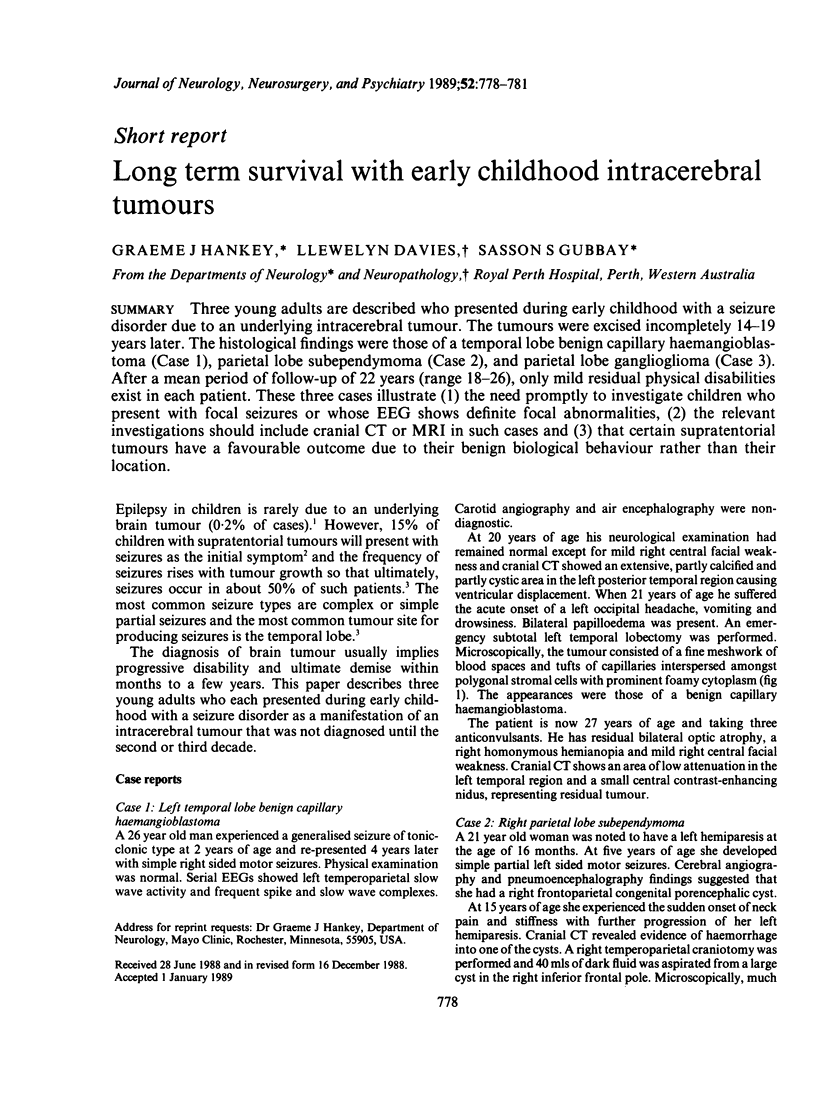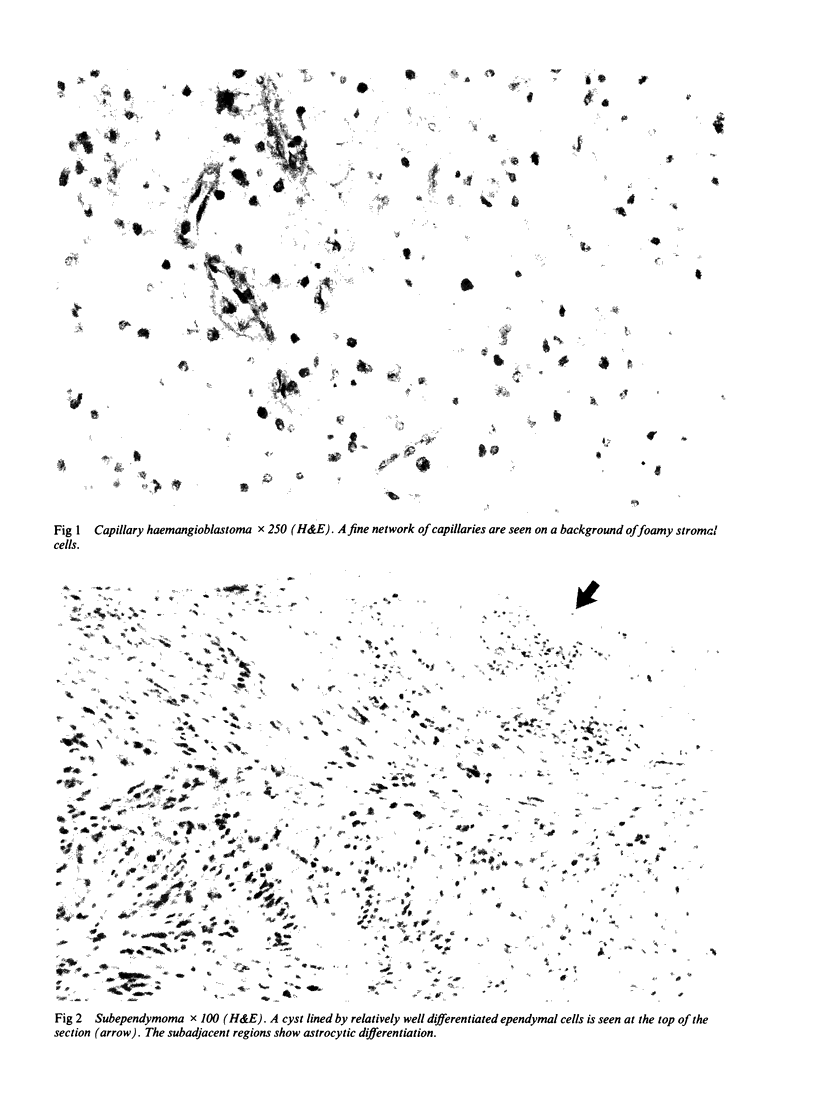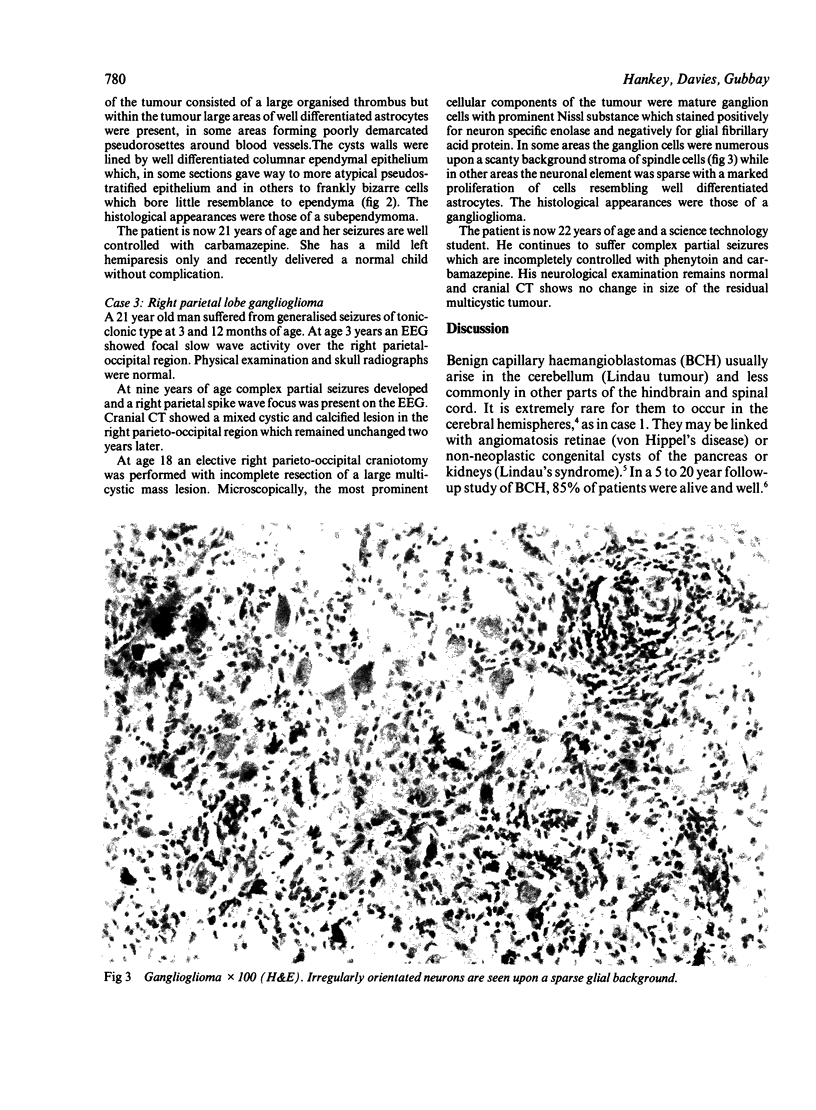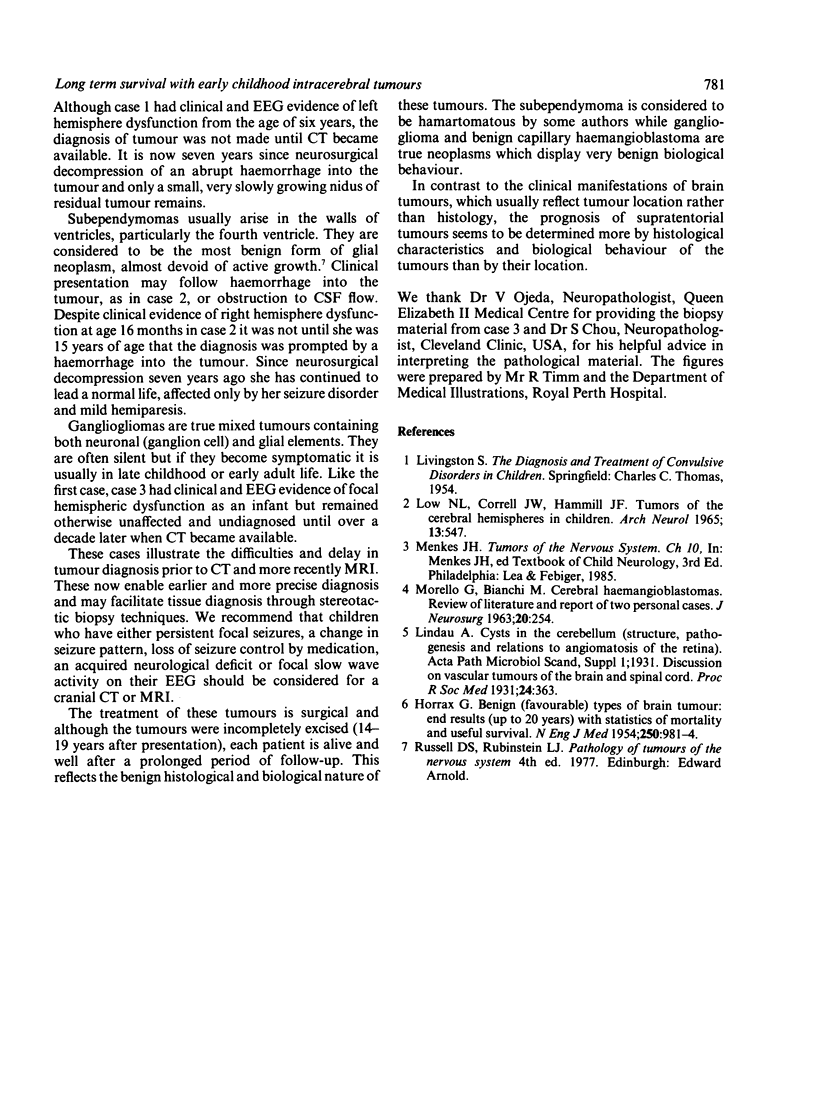Abstract
Three young adults are described who presented during early childhood with a seizure disorder due to an underlying intracerebral tumour. The tumours were excised incompletely 14-19 years later. The histological findings were those of a temporal lobe benign capillary haemangioblastoma (Case 1), parietal lobe subependymoma (Case 2), and parietal lobe ganglioglioma (Case 3). After a mean period of follow-up of 22 years (range 18-26), only mild residual physical disabilities exist in each patient. These three cases illustrate (1) the need promptly to investigate children who present with focal seizures or whose EEG shows definite focal abnormalities, (2) the relevant investigations should include cranial CT or MRI in such cases and (3) that certain supratentorial tumours have a favourable outcome due to their benign biological behaviour rather than their location.
Full text
PDF



Images in this article
Selected References
These references are in PubMed. This may not be the complete list of references from this article.
- HORRAX G. Benign (favorable) types of brain tumor; the and results (up to twenty years), with statistics of mortality and useful survival. N Engl J Med. 1954 Jun 10;250(23):981–984. doi: 10.1056/NEJM195406102502303. [DOI] [PubMed] [Google Scholar]
- Low N. L., Correll J. W., Hammill J. F. Tumors of the cerebral hemispheres in children. Arch Neurol. 1965 Nov;13(5):547–554. doi: 10.1001/archneur.1965.00470050095012. [DOI] [PubMed] [Google Scholar]
- MORELLO G., BIANCHI M. CEREBRAL HEMANGIOBLASTOMAS: REVIEW OF LITERATURE AND REPORT OF TWO PERSONAL CASES. J Neurosurg. 1963 Mar;20:254–264. doi: 10.3171/jns.1963.20.3.0254. [DOI] [PubMed] [Google Scholar]





